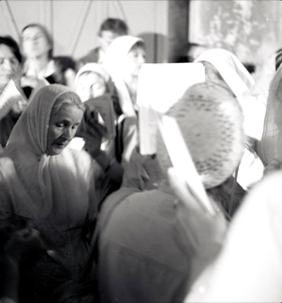Religious Claims as Boundary Making

Constructing Urban Territory through the Sacred:
The Case of the Lababidi mosque in Acre
Abstract of a lecture presented at the workshop:
Recentering Borderlands:
Comparative Cases from Mexico / US and Palestine / Israel
University of Toronto, September 20, 2013
Nimrod Luz
The Habermasin concept of the Post-secular city is yet under theorized and still heavily debated. However, in this lecture I want to suggest that as long as it is geographically grounded and certainly when taken in its spatial aspects it is rather useful to understand how contemporary cities are growingly changing (succumbing if one clings to a modernistic planning position) in accordance to religious claims that constantly affect urban boundaries and territorial settings within cities. Thinking of territory as 'that which is bound', I argue that in the postsecular city boundary making and claims for urban spaces and resources are growingly framed through religiousity and religious understanding. In particular I look at the ways sacred sites are being claimed, owned and prodcued as ways to demand the 'right to the city' and thus changing and struggling over cultural urban boundaries. A pertinent case in point to explore these theoretical arguments is the recent struggle over the reopenning of a mosque in the mixed city of Acre in northern Israel. The Lababidi mosque was built in 1930 but as of 1948 remained closed and its respective community could not preform rituals within. In 2012 the Islamic Endowment Authorities of Acre launched a ratoration project which ultimately reinstated the compound to its original function; an Islamic house of prayer. Since, March 2012, and against the backdrop of growing unrest and militant declaration of various member of the majority community regular prayers are conducted in the mosque five times a day and throughout the week. Thus effectively the Muslim minority community was actively engaged in claiming urban territory and constructing new cultural-political boundaries by claiming its 'sacred ground'.In this lecture I follow the reconstruction process and the public debate that followed from a myriad of perspectives and ethnographic encounters, thus demonstrating not only the religious multivocality which is the post-secular city but also discussing the importance of sacred sites as boundary makers. This discussion also enables an exploration into the ways religious claims are used as forms of resistance, identity construction and follows the role of religious claims in re-inscribing the disposed community into the urban landscape and establishing its right to the city.